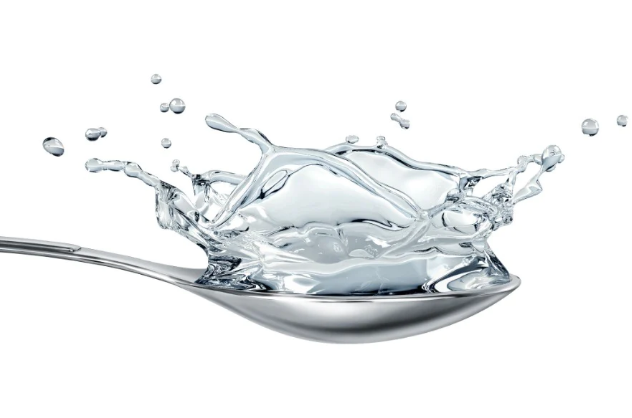Long before artificial antibiotics were invented, humanity had a powerful ally in the fight against infection: colloidal silver. Known as “liquid silver” to ancient healers and modern naturalists alike, this shimmering suspension of microscopic silver particles has stood the test of time. While mainstream medicine may have pushed it aside, a growing number of people are rediscovering colloidal silver’s incredible healing properties—and using it safely, wisely, and effectively.
If you’re curious about how to use this natural wonder without risking your health, read on. as you discover the real benefits of colloidal silver—and how to make it part of your wellness toolbox.
💧 What Is Colloidal Silver, Exactly?
Colloidal silver is a liquid suspension of microscopic silver particles—tiny, charged pieces of silver floating in purified water. It’s not just an old wives’ tale; silver was used for centuries to preserve food and purify water. Even today, silver is found in medical-grade bandages and burn creams.
And yes, before penicillin came onto the scene, colloidal silver was a trusted medical staple used by doctors to disinfect wounds and prevent infection.
🩹 Powerful Uses of Colloidal Silver
✅ Wound Healing & Skin Protection
Got a cut, scrape, or burn? Colloidal silver may be just what you need. When applied topically, it helps clean the area, kills harmful microbes, and supports faster healing—without causing the burning or stinging you get from alcohol or peroxide.
Silver dressings are still used in modern hospitals for burn victims. Why? Because silver destroys bacteria by rupturing their cell membranes—without harming human cells when used correctly.
✅ Sinus & Nasal Relief
Colloidal silver is becoming popular as a natural antibiotic remedy for sinus infections (rhinosinusitis). When used in gentle nasal rinses, silver’s anti-biofilm properties help reduce inflammation and support healthy breathing. A 10-day rinse cycle may offer real relief—with no other antibiotics needed.
Pro tip: Always consult a health professional for proper dilution and delivery methods before using silver in the nose.
✅ Soothing Skin Conditions
From eczema to acne, many people apply colloidal silver gel or spray for its anti-inflammatory and antibacterial qualities. It calms the skin, helps with redness, and may even reduce scarring when used as part of a holistic skincare routine.

⚠️ The Safe Way to Use Colloidal Silver
Yes, it’s amazing. But it’s not magic, and like anything powerful, colloidal silver must be used with care.
🚫 What NOT to Do
-
- Do NOT drink it in large amounts. While some people take it orally, long-term internal use can cause a condition called argyria—a permanent gray-blue skin discoloration.
- Don’t believe the hype about silver curing everything. It’s a great antibiotic and supportive remedy, but it’s not a miracle cure for chronic diseases.
Argyria: This condition primarily results from the accumulation of excessively large particles of low-quality colloidal silver within the capillaries of the skin.
Not All Colloidal Silver is Created Equal
The most effective silver-based antimicrobials are produced using high-voltage methods, with the highest natural voltage source being lightning. Historically, ancient civilizations accessed electrically charged silver solutions by placing a silver vessel filled with water in an elevated location during thunderstorms, allowing it to be struck by lightning. This process was utilized to create the potent healing liquid.
In modern times, a U.S.-based facility has replicated this ancient technique using Tesla lightning technology to enhance colloidal silver production. While colloidal silver can be generated with lower voltages, such as a standard 9-volt battery, this method results in larger silver particles that may accumulate in the body, potentially leading to Argyria.
✅ Smart Ways to Use It
-
- Topical Use: Sprays, gels, and creams for cuts, burns, acne, or minor infections.
- Nasal Irrigation (short term): Diluted and guided by a professional.
- Eye Drops or Ear Rinses: Only under expert supervision.
- Cleaning Surfaces: Spray colloidal silver to disinfect surfaces naturally.
🧴 Forms of Colloidal Silver You’ll Love
| Form | Best Use | Notes |
| Liquid | External spray or cleaning agent | Avoid internal use without guidance |
| Gel | Targeted skin treatment | Great for acne, burns, and scrapes |
| Spray | Convenient on-the-go use | Great for travel kits or first aid boxes |
| Nasal Spray | Sinus rinse (short-term only) | Must be properly diluted |
🛡️ How to Choose a Quality Product
Not all colloidal silver is created equal. Here’s what to look for:
-
- Small particle size: Ideally under 100 nanometers for better absorption and safety.
- True colloidal silver: Avoid products with too much silver protein or additives.
- Clear labeling: Trust brands that are transparent about how their silver is made.
And remember to store it in a cool, dark place to preserve its power.
🧠 Knowledge is Power: Colloidal Silver Myths vs. Reality
| Myth | Reality |
| Colloidal silver is dangerous. | Only if misused or ingested irresponsibly. Topical use is widely accepted. |
| It turns you blue instantly. | Argyria develops from long-term misuse. Responsible use poses no such risk. |
| It’s outdated and ineffective. | Science backs silver’s antimicrobial power—it’s even in medical bandages! |
| It can replace all medicine. | It’s a helpful tool, not a cure-all. Pair with healthy habits and medical advice. |
🌿 Why Colloidal Silver Still Matters Today
In a world drowning in synthetic pharmaceuticals and antibiotic-resistant superbugs, colloidal silver offers a natural, time-tested alternative. It’s part of a larger movement back to nature—one that honors the wisdom of ancient healing and modern science alike.
For minor wounds, skin irritations, and sinus discomfort, colloidal silver is a gentle warrior—cleaning, calming, and protecting your body without chemical overload.

✨ A Silver Lining for Your Health Journey
Colloidal silver is not a trend—it’s a timeless remedy regaining its rightful place in holistic health. By using it smartly and responsibly, you can unlock its benefits while avoiding risks.
So go ahead. Stock your natural medicine cabinet with colloidal silver. Just like our ancestors, you’ll have a powerful healing ally at your fingertips—one drop at a time.
Always consult your healthcare provider before starting any new health regimen, especially if you’re pregnant, nursing, or taking other medications.

